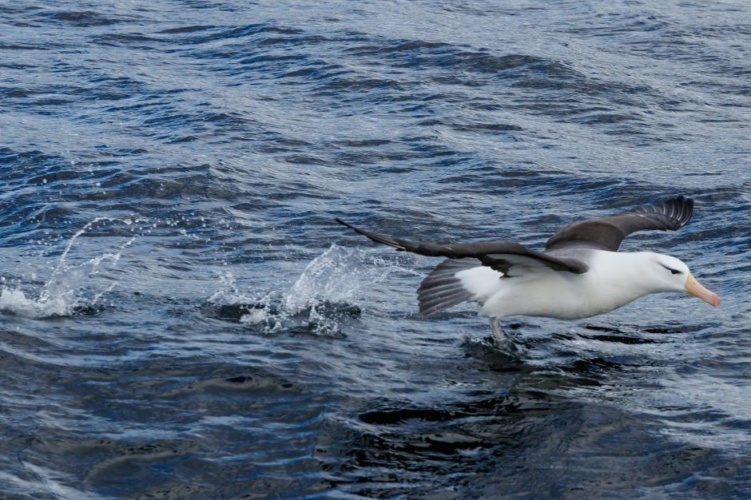
For their study, scientists at Duke University and the Wildlife Conservation Society (WCS) used a deep-learning algorithm to analyse over 10,000 drone images of mixed colonies of seabirds in the Falkland Islands. Their findings are published in Ornithological Applications.
The Falklands are home to the world's largest colonies of black-browed albatrosses and second-largest colonies of southern rockhopper penguins. Hundreds of thousands of birds breed on the islands in densely interspersed groups.
UEA technology to detect endangered right whales
The deep-learning algorithm is said to have correctly identified and counted the albatrosses with 97 per cent accuracy and the penguins with 87 per cent. The automated counts were within five per cent of human counts about 90 per cent of the time.
"Using drone surveys and deep learning gives us an alternative that is remarkably accurate, less disruptive and significantly easier. One person, or a small team, can do it, and the equipment you need to do it isn't all that costly or complicated," said Madeline C. Hayes, a remote sensing analyst at the Duke University Marine Lab, who led the study.
Monitoring the colonies on two rocky, uninhabited outer islands has so far been done by teams of scientists who count the number of each species they observe on a portion of the islands and extrapolate those numbers to get population estimates for the full colonies.
According to Duke, counts often need repeating due to the colonies being large and densely interspersed. The penguins are much smaller than albatrosses, so they can be missed during counts that are laborious and potentially disruptive to the birds' breeding and parenting behaviours.
To conduct the new surveys, WCS scientists used an off-the-shelf consumer drone to collect more than 10,000 individual photos of the seabirds, which Hayes converted into a large-scale composite visual using image-processing software.
She then analysed the image using a convolutional neural network (CNN), a type of AI that employs a deep-learning algorithm to analyse an image and differentiate and count the objects it ‘sees’ in it, such as two different species of sea birds. These counts were added together to create comprehensive estimates of the total number of birds found in colonies.
"A CNN is loosely modelled on the human neural network, in that it learns from experience," said David W. Johnston, director of the Duke Marine Robotics and Remote Sensing Lab. "You train the computer to pick up on different visual patterns, like those made by black-browed albatrosses or southern rockhopper penguins in sample images, and over time it learns how to identify the objects forming those patterns in other images such as our composite photo."
Johnston, who is also associate professor of the practice of marine conservation ecology at Duke's Nicholas School of the Environment, said the emerging drone and CNN enabled approach is widely applicable as it greatly increases the ability to monitor the size and health of seabird colonies worldwide, plus the health of the marine ecosystems they inhabit.




Glasgow trial explores AR cues for autonomous road safety
They've ploughed into a few vulnerable road users in the past. Making that less likely will make it spectacularly easy to stop the traffic for...